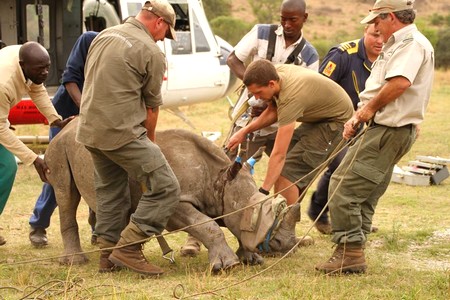
Introduction
Africa is home to an array of stunning landscapes and diverse ecosystems that support some incredible wildlife species. Unfortunately many are currently facing extinction due to various threats such as habitat loss, poaching or climate change. In this blog post we aim at highlighting ten endangered African animal species whose survival depends on urgent conservation efforts. By raising awareness about their plight we hope people will take action towards protecting these magnificent creatures for future generations.
1. Mountain Gorilla – (Gorilla beringei beringei)
The Mountain Gorilla is one of the most endangered species on earth due to habitat destruction, poaching and human encroachment. With only about 1000 individuals left in their natural habitats worldwide; it has become crucial for conservationists like Dian Fossey Gorilla Fund who are working tirelessly towards protecting these magnificent creatures along with preserving their ecosystems. The efforts made by such organizations have never been more important than now as we strive towards a sustainable future where all living beings can thrive together harmoniously.
2. Ethiopian Wolf – (Canis simensis)
The Ethiopian Wolf is one of the most endangered canid species on Earth with fewer than 500 individuals left. Conservationists are working tirelessly to protect their habitat and manage diseases in order to secure a future for this rare creature found only within Ethiopias highlands. The need for urgent action cannot be overstated as we strive towards preserving biodiversity across our planet.
3. Cross River Gorilla – (Gorilla gorilla diehli)
The Cross River Gorilla is one of the most endangered primates globally with only around 300 individuals left. Conservationists are working closely alongside local communities to protect their habitats and combat poaching in order to safeguard these animals existence within Nigeria’s border region shared by Cameroon. Its imperative that we take action now before its too late for this unique species.
4. Northern White Rhinoceros – (Ceratotherium simum cottoni)
The Northern White Rhinoceros is now on the brink of extinction with only two individuals left in existence. This subspecies has suffered a significant blow since Sudans passing – who was their last male member. Conservationists are working tirelessly to save this species through innovative reproductive technologies such as IVF treatments. Its crucial that we act quickly and effectively if we want these magnificent creatures around for future generations.
5. African Wild Dog – (Lycaon pictus)
African Wild Dogs are renowned for their intricate social structure and distinctive coat patterns. However these animals face numerous challenges including habitat destruction caused by human activities as well as conflicts with humans themselves. With only around 5,000 individuals left in existence today it is imperative that we take action to protect them through concerted conservation efforts such as those being undertaken by organizations like the Painted Dog Conservation who have made significant progress towards mitigating these threats. By working together we can ensure a brighter future for this fascinating species.
6. Grevy’s Zebra – (Equus grevyi)
The Grevy’s Zebra is a unique species with its narrow stripes and larger size. Unfortunately this African mammal faces significant threats due to their dwindling population numbers – estimated at fewer than 3,000 individuals remaining today. Conservationists are striving to preserve habitats and engage communities in anti poaching efforts aimed at ensuring the survival of these magnificent creatures for future generations. With your support we can make a significant impact!
7. Addax – (Addax nasomaculatus)
The Addax, a unique antelope species found only in the Sahara Desert is currently facing significant challenges due to hunting and habitat destruction. With less than 100 individuals left in their natural environment immediate action must be taken. Conservation efforts require captive breeding programs along with restoration of habitats as crucial components for ensuring survival of this critically endangered animal.
8. Pangolins – (Various species)
The worlds eight species of pangolins face significant threats from poaching, habitat destruction and wildlife trafficking. These scaly anteaters play a critical role in controlling insect populations making their conservation crucial for maintaining healthy ecosystems. Organizations like the African Pangolin Working Group are leading efforts to combat these declines by implementing effective strategies aimed at protecting them. With continued support we can ensure that future generations will have an opportunity to witness this unique creature thriving within its natural environment.
9. The Pemba Flying Fox – (Pteropus voeltzkowi)
The Pemba Island fruit bat is an endemic species found only in Tanzania that faces a critical threat due to habitat destruction and hunting. With just a few hundred individuals left, conservationists are working tirelessly towards protecting their habitats while raising awareness about the importance of these creatures.
10. Seychelles Sheath-tailed Bat – (Coleura seychellensis)
The Seychelles is home to a unique bat species that faces imminent extinction due to habitat loss and disturbance. With only around 100 individuals left in existence urgent conservation measures are necessary if we hope to prevent their disappearance from the wild forever. The time for action is now! Let’s work together towards preserving this precious creature before its too late.
Conclusion
The endangered species in Africa serve as a stark reminder of the pressing need for conservation efforts. By supporting organizations, engaging with local communities and advocating sustainable practices we can make significant progress towards preserving Africa’s rich biodiversity. Together lets work towards ensuring that these magnificent creatures have a brighter future ahead by protecting their habitats from harmful human activities such as deforestation or poaching. With collective action we can create lasting change that benefits both humans and wildlife alike.











